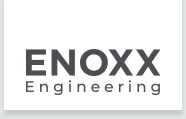- Home
- ENOXX Engineering
- Technology
- Metal forming
Top of the class: deep drawing
The most frequently used combined tensile and compressive forming method for parts is deep drawing. This involves forming a flat sheet blank into a hollow body open on one side by applying high pressure with a tool (punch and die).
Deep drawing requires precise tools, powerful presses and material science and machining expertise.
Forming simulations increase quality and efficiency
We work with forming simulations at all times at B.PRO. This allows us to optimise manufacturing processes, increase cost-effectiveness and achieve superior quality in the end product.
Forming simulation on a computer provides precise predictions about a material’s behaviour when formed in a particular way long before a tool is actually built or a prototype even exists. This offers a variety of advantages:
- The deep-drawn part can be studied to detect any thinning, wrinkling or crack formation
- Simulation can determine how local degrees of hardness and strength have altered during the forming process
At B.PRO, findings from forming simulation are incorporated directly into in-house toolmaking, material definition and further processing of the deep-drawn part after deep drawing.

- Reproducible manufacturing quality
- Short turnaround times
- Virtually unvarying wall thickness
- Large lot sizes possible
- High output
Our presses are able to meet many different requirements

We have both fully automated and manually operated press lines. The fully automated lines feature automatic deflashing cells to some extent and are ideal for cost-effective production of flat deep-drawn parts such as Gastronorm containers or for both active and passive drawing.
Our entire machine pool comprises fourteen hydraulic presses with an extensive variety of characteristics and pressing forces between 1,600 and 20,000 kN.



